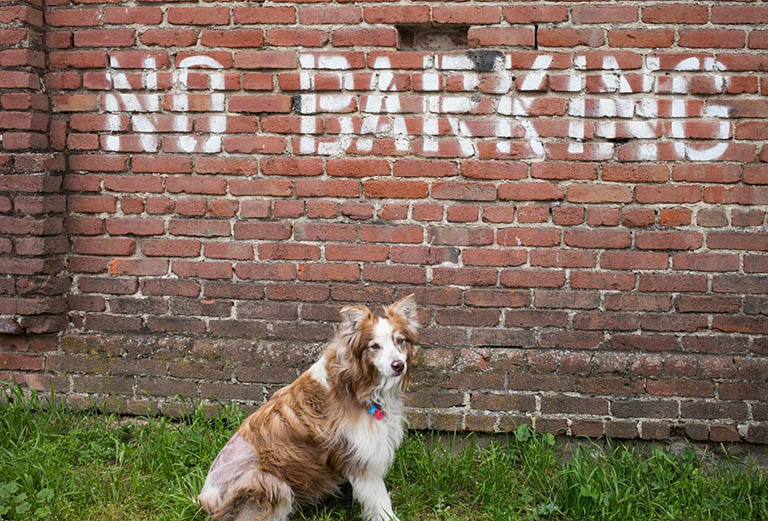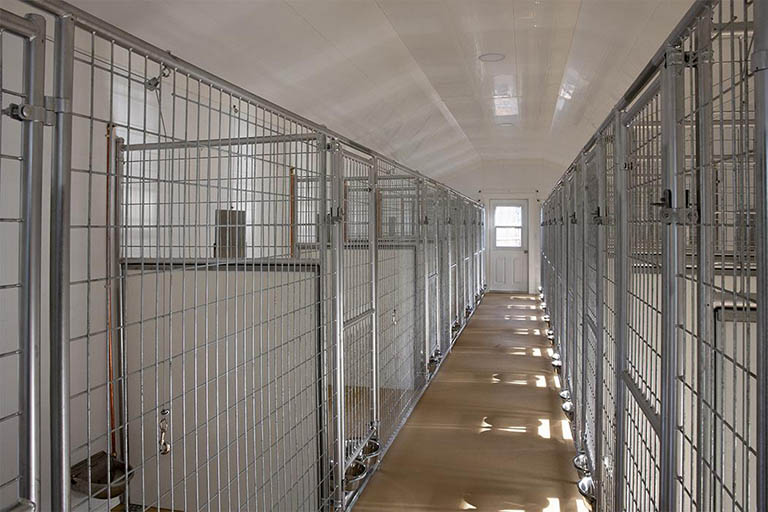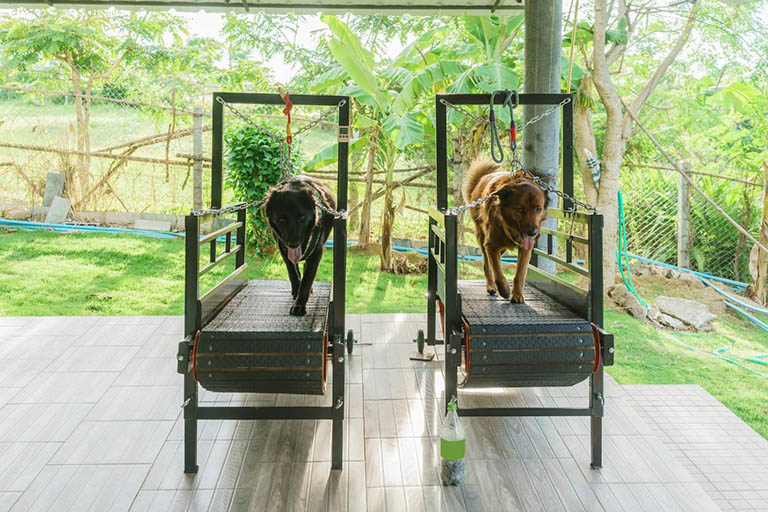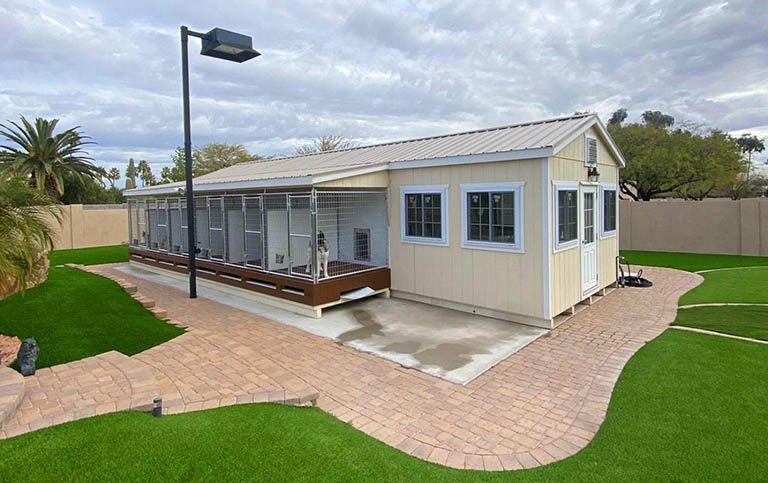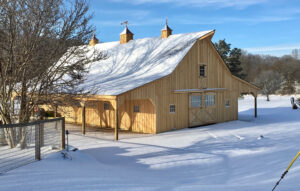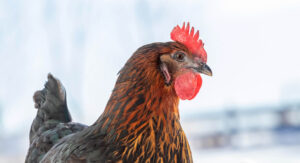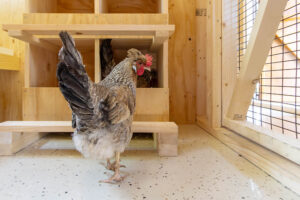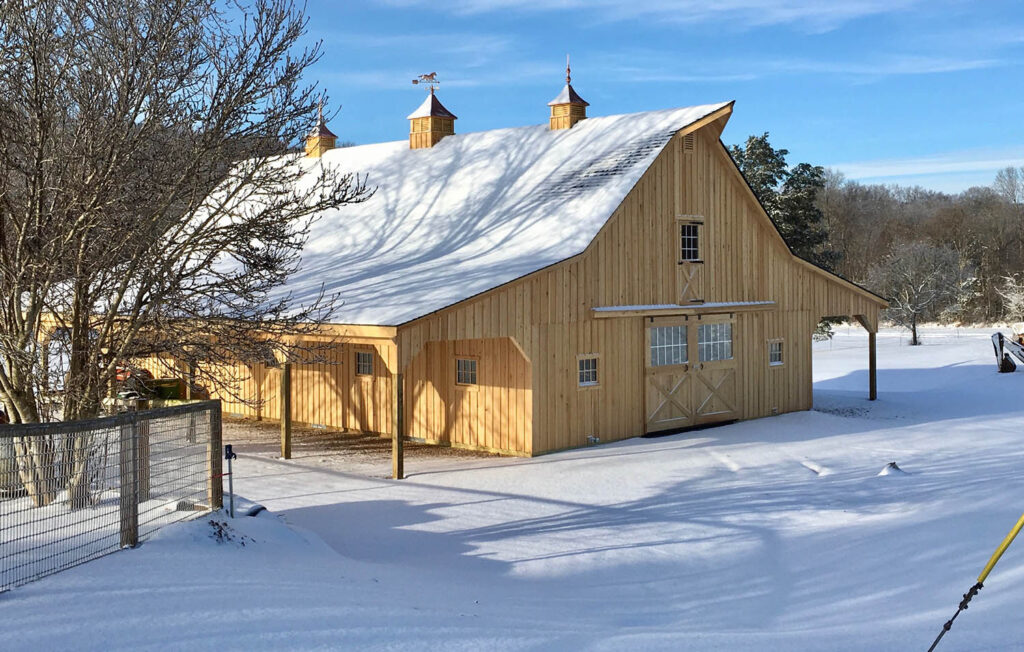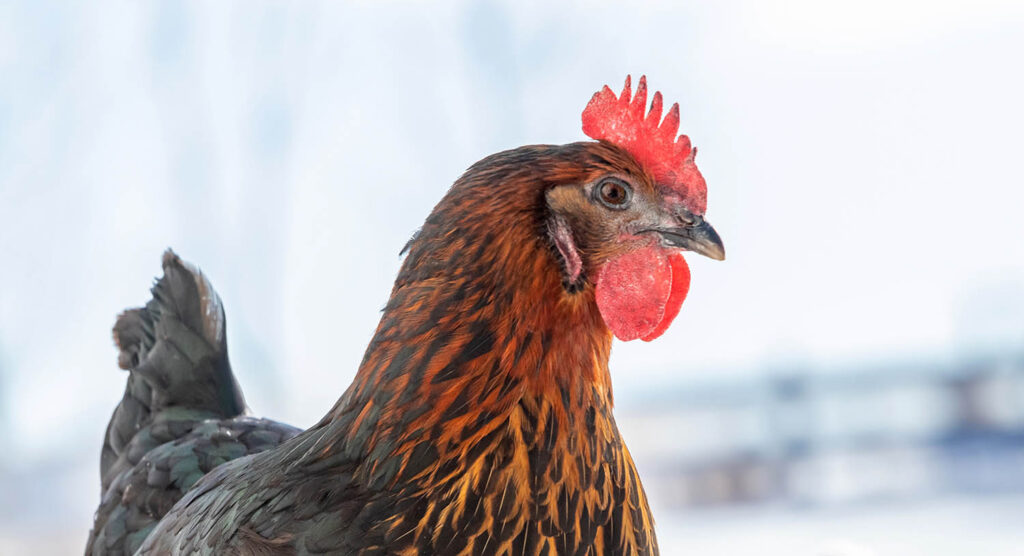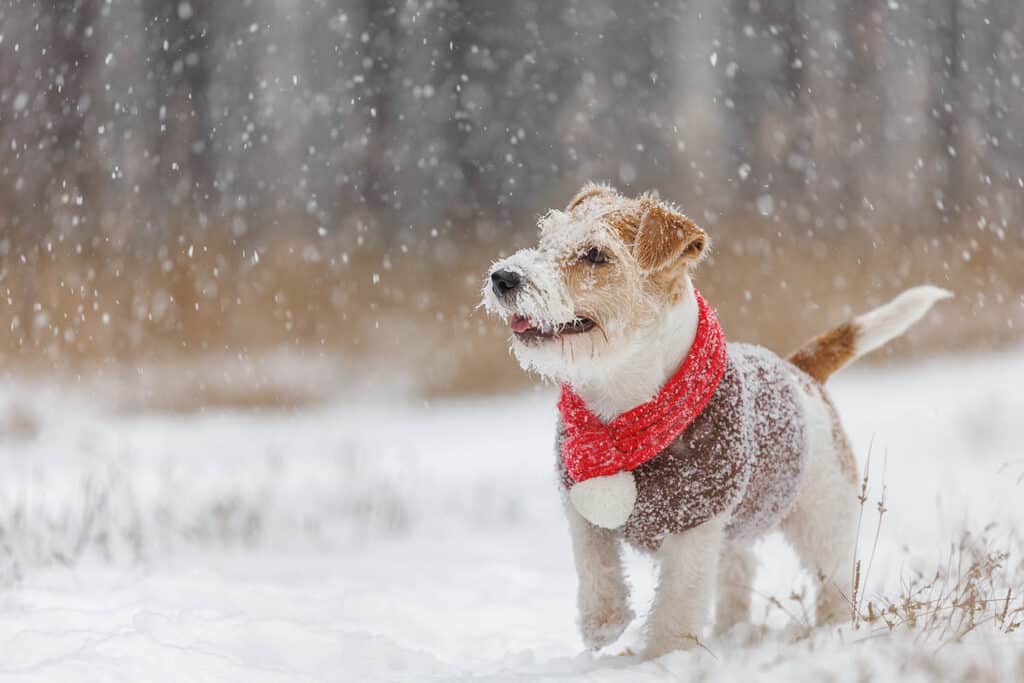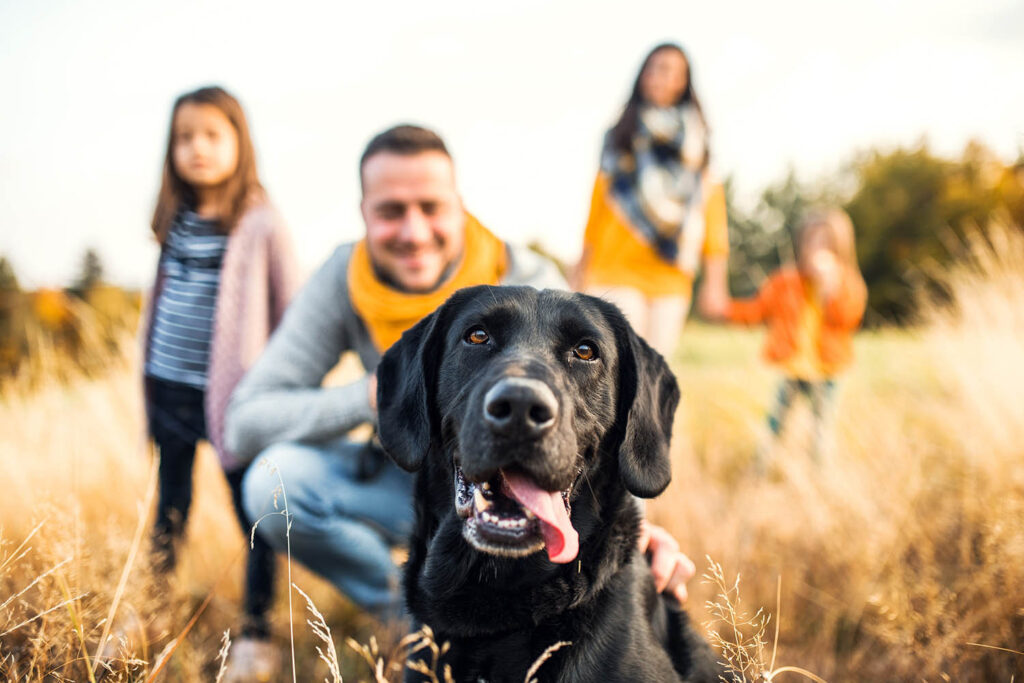Barking is a problem for most people who utilize kennels. It’s a dog’s instinct to bark for all sorts of reasons, and the kennel environment tends to cause dogs to bark when other dogs bark. However, there are several things that you can do both in the design of your kennel and in your behavior towards the dogs to make your kennel quieter.
Dividers Between Runs
Without dividers between your runs, dogs are quite likely to bark at one another through the fencing. This is particularly common with dogs that don’t know each other well or socialize outside of the kennel.
However, it can also happen with dogs that know each other, particularly if they would rather be playing together than separated by a fence. Not having a divider also makes it more likely that dogs will feed off of one another’s energy and that the entire kennel will bark whenever one dog barks.
Dividers are unlikely to completely stop dogs from barking, but they can make a big difference and are a great starting point when trying to create a quieter kennel.
Treat Baskets on the Front of Kennels
Dogs can be actively trained to be quiet within their kennels. This can work surprisingly well whether you have a permanent or transient population. Simply place a treat basket on the front of the kennel and toss a treat into the kennel whenever dogs are quiet.
If you have members of the public moving through your facility, it’s a good idea to put a sign on the front of each kennel that instructs people to toss a treat to dogs when they are quiet. It isn’t necessary to attach a command to the quiet behavior. In fact, it’s better to randomly reward dogs whenever they are quiet, so dogs will voluntarily offer up quiet behavior in hopes of getting a reward.
Food Distributing Toys During High Activity Times
There are often particular times when dogs are more prone to barking. Common loud times are:
- When the kennel is being cleaned
- During the busiest times for the public to visit
- When you are training other dogs within sight of the kennels
During these times, it’s a good idea to offer food distributing toys to keep dogs occupied and quiet. Dogs are much less likely to bark when they have a toy in their mouth. Many people find that it is beneficial to provide all a kenneled dog’s meals through food distributing toys.
These toys provide mental stimulation and can occupy dogs for hours. Dogs are likely to be much quieter while they’re consuming the toy and may even be quieter the rest of the time.
Place Dogs Thoughtfully
Some dogs get along with one another better than others. Even with dividers between kennel runs, dogs that dislike one another are likely to recognize the other dog’s presence and express their displeasure with the other dog’s proximity quite loudly.
If you notice that two dogs are often barking at each other through the divider, try spacing them further apart. When dogs have serious feuds with one another, it may be worthwhile to have two smaller kennels at opposite sides of your property rather than housing dogs close together in one kennel.
Avoid putting the dogs that bark the most by the entry doors or the most heavily trafficked areas. When these dogs bark, they are likely to set off the entire kennel, so it’s best to ensure that they have as little reason to bark as possible.
Eliminate Barking Stimuli
If livestock or wild animals that are likely to trigger barking are allowed to pass in front of the kennels, it is nearly impossible to convince dogs not to bark. This is especially true for hunting breeds that vocalize while hunting, like hound dogs, but it is often true for dogs.
Put up fences or visual barriers so that dogs won’t see any stimuli that encourage them to bark. Some dogs are even motivated to bark by vehicular or foot traffic, so it’s a good idea to put up a visual screen like a hedge to keep dogs from seeing roads or paths.
Provide Plenty of Exercise
Tired dogs are much less likely to bark than dogs that are pent-up with energy. Some dogs who are overflowing with energy may bark just to have something to do, even if you’ve eliminated all of the potential causes for barking discussed above.
If you do not have the time or space to give each dog as much exercise as they need to be quiet, consider using a swimming pool or treadmills to offer dogs a more intense exercise workout with less active involvement required from you. Swimming tires dogs out quicker than most other forms of exercise without putting strain on their joints.
You can supervise multiple dogs using treadmills at one time, enabling you to significantly increase the overall workout that your dogs receive without increasing your time investment.
Never Yell
It can be tempting to yell at dogs who are barking in their kennels to be quiet, but this is more likely to backfire than it is to be effective. When you yell at dogs, they tend to believe that you are joining in or vocalizing for the same reasons the dog is, reinforcing the behavior.
Instead of yelling, consider tying a very specific sound like a particular whistle to a reward. When you make the sound and the dog is quiet, you can reward them. Whistles or other attention-getting sounds work well because dogs intuitively become quiet to listen to it, making it simple for you to reward the silence.
Ignore Barking Dogs
Dogs often see your attention, whether positive or negative, as reinforcement. When you pay attention to barking dogs, they may be more likely to keep barking at the time and to bark the next time they see you.
Instead, give your attention to dogs were being quiet. Dogs that are barking may realize that your attention is going to the quiet dogs and mimic quiet behavior.
Enjoy a Quieter Kennel
It is unrealistic to think that your kennel will always be silent, but by following these tips and taking steps to design a kennel that contributes to quiet behavior and rewarding quiet behavior in your dogs, it is much more likely that you will maintain a significantly quieter kennel.


